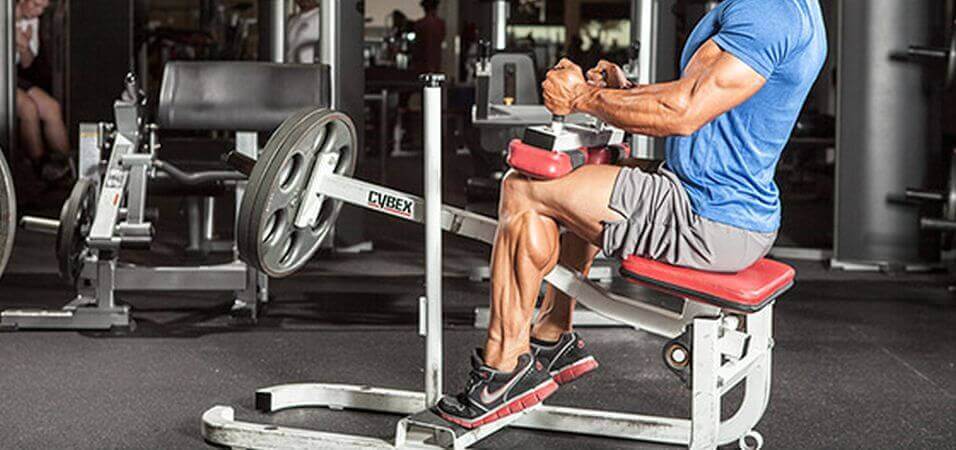
As we all know, the calves are a very stubborn body part to develop and are often unresponsive to any passive training techniques. Unlike other body parts which can grew reasonably well from the major compound exercises, the calves usually require a more direct and aggressive approach. As we naturally use the calves every day as we take countless steps it may be little wonder why the calves brush off a moderate level of exercise. It’s also true that the calves are quite a flat muscle group, therefore notable growth may take a longer duration compared to other small muscle groups such as the biceps, triceps, deltoids and trapezius. This article covers what the author believes to be the two most important aspects of calve training; calve raise form and training volume.
Exercise form of the calve raise
The calve raise is the best exercise to target the calves. The bulk of the calves are composed of the gastrocnemius, a two headed muscle which is shaped like an up-side-down heart. This muscle is best exercised by the standing calve raise, or a donkey calve raise. The flat muscle which runs underneath the gastrocnemius is called the soleus, and this muscle is exercised via seated calve raises.
Whilst seated calve raises are required to exercise the soleus, the bulk of the calve is exercised by standing calve raise variations. Any calve raise requires sound form to get 100% benefit from the exercise. In brief; the exercise should begin with the calves fully stretched by having the heels well below the platform level. The trainee then ascends onto his/her tip toes and holds this peak position for a second. The movement is then slowly reversed and repeated for repetitions. There should no bouncing or partial repetitions, unless desired by the trainer for some unknown reason.
Calve volume
As mentioned, to develop the calves a high level of demand must be placed upon them. Many trainers have successfully managed this by following a high volume training policy where a high number of repetitions are implemented, with minimal (or even zero) rest times. This will also cause the calves to fill with blood and become pumped; leading some trainees to include a post workout intense stretching protocol designed to stretch the fascia of the calves.
Try this workout next time you train your calves and see what you think!
Standing (machine) calve raises 12 repetitions
…no rest…
Donkey calf raises 12 repetitions
…no rest…
Body weight calf raises on floor 12 repetitions
= One Giant Set
Perform this giant set 3 times, with no more than 2 minutes rest between each giant set.